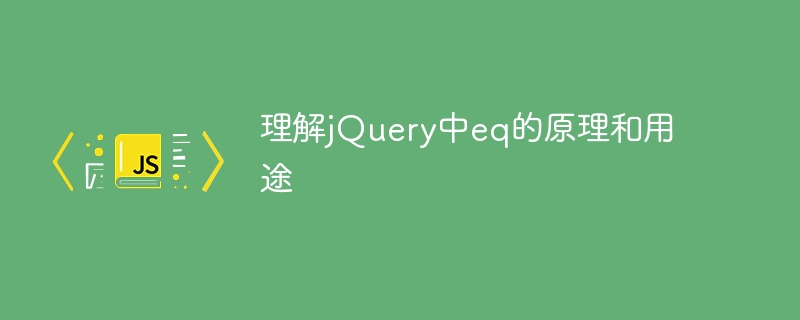

Title: In-depth understanding of the principles and uses of eq in jQuery
jQuery is a popular JavaScript library that provides developers with convenient DOM operations and event handling Function. Among them, the eq() method is one of the commonly used methods in jQuery, which is used to obtain the element at the specified index position. This article will delve into the principles and uses of the eq() method, and use specific code examples to help readers better understand.
The eq() method is a method used in jQuery to select elements at specified index positions. Its principle mainly involves two aspects: index calculation and element selection.
The main uses of the eq() method include locating elements at specific positions, traversing element collections, and event processing. The following will illustrate the various uses of the eq() method through specific code examples.
// 选择第三个li元素并添加样式
$("ul li").eq(2).css("color", "red");In the above code, eq(2) means to select the third li element and add a red text color to it style.
// 遍历所有li元素,并为偶数项添加背景色
$("ul li").each(function(index) {
if (index % 2 === 0) {
$(this).css("background-color", "lightgrey");
}
});The above code uses the each method to traverse all li elements, determine the position of the element through the index parameter, and add a light gray background color to the even items.
// 点击第一个按钮,隐藏第二个p元素
$("#btn1").click(function() {
$("p").eq(1).hide();
});In the above code example, when the button with id btn1 is clicked, the second p element will be hidden to implement simple event processing function .
Through the above code examples, readers can clearly understand the usage and role of the eq() method in jQuery. The eq() method can not only accurately select the element at the specified position, but also conveniently traverse the element collection and handle events, providing developers with powerful functional support.
In summary, mastering the principles and uses of the eq() method in jQuery is of great significance to improving development efficiency and code quality. Through the introduction and code examples of this article, I hope readers can have a deeper understanding of the eq() method, so that it can be applied in actual projects and bring more convenience and efficiency improvements to front-end development work.
The above is the detailed content of Understand the principles and uses of eq in jQuery. For more information, please follow other related articles on the PHP Chinese website!